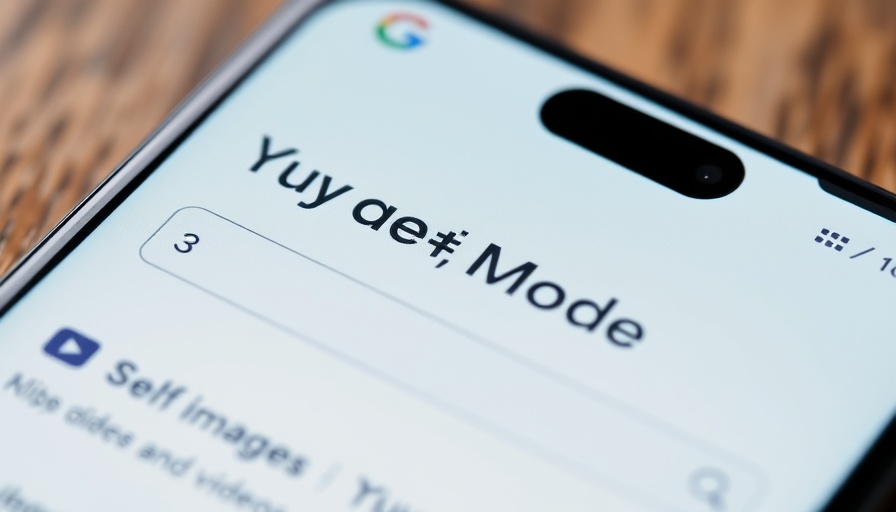
Understanding Google's AI Mode Traffic Attribution Bug
Google recently addressed a significant bug in its AI Mode that incorrectly classified organic search traffic as direct traffic in Google Analytics. This issue arose when Google's AI Mode links were appended with a special code, rel='noopener noreferrer', that inadvertently blocked proper tracking. As a result, marketers and businesses may have seen skewed data affecting their SEO performance assessment.
What Caused the Confusion?
The attribution problem was first highlighted by Maga Sikora, an SEO director specializing in AI search. She alerted the marketing community about the bug, which led to a flurry of feedback from industry experts. This misattribution meant traffic flowing from Google's AI Mode results was not being recorded accurately, posing a challenge for businesses relying on precise data for optimizing their strategies.
The Role of John Mueller in Resolving the Issue
John Mueller, a Search Advocate at Google, acknowledged the mix-up and confirmed that it was a bug on their end. His prompt acknowledgment of the error and commitment to fixing the issue reflected Google’s understanding of how crucial accurate traffic data is for marketers. Mueller also noted that future updates would include data representation changes for AI Mode, ensuring clearer attribution going forward.
The Importance of Accurate SEO Reporting
During the days when the bug was active, businesses may have been misled into believing their SEO performance was underwhelming due to inflated direct traffic numbers. This could have significant ramifications, including skewed conversion tracking, misguided budget decisions, and a misrepresentation of how AI Mode impacted overall web traffic. Businesses failed to see the true value of the influx of organic traffic during this time.
What Businesses Should Do Next
With the bug's fix now implemented, it’s time for businesses to audit their recent traffic data. They should investigate any unusual spikes in direct traffic correlated to the past week, document periods of misattribution for future reference, and make necessary adjustments on client reporting to reflect this temporary confusion. Additionally, as businesses adapt to AI Mode, proactive planning on how to track this new traffic will be essential.
Looking Ahead: Preparing for Future Technology Disruptions
As technology continues to evolve, understanding the implications of AI and data attribution becomes paramount. It’s essential to stay abreast of developments within the tech industry, such as advances in artificial intelligence and changes in algorithmic approaches. Being well-informed can help businesses adapt and harness new operational efficiencies that can arise from these advancements.
Google's quick resolution of this bug demonstrates its commitment to providing accurate tools for marketers, ensuring that data reporting is reliable. Mastering how to navigate these disruptive technologies is vital for success in digital marketing and beyond.
 Add Row
Add Row  Add
Add 




Write A Comment